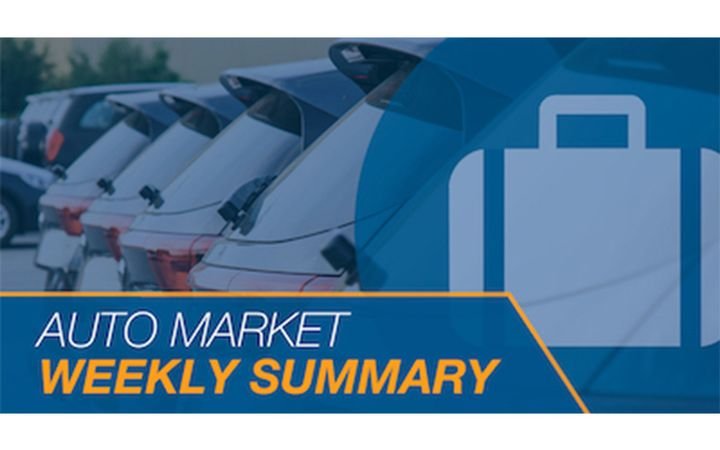Cox Automotive: Auto Market Weekly Summary

The slowing auto market will lead Cox Automotive to revise downward its full-year new-vehicle sales forecast.
COX AUTOMOTIVE – The surging Delta variant of COVID-19 is having a major impact on the economy, especially on jobs. August saw a big deceleration in job creation, including zero new jobs created in Leisure & Hospitality, which had been growing fast.
Pending home sales fell in July. Consumer confidence and sentiment continue to fade as COVID cases continue to climb to levels last seen in late January. And the new vehicle market lost more momentum in August as the market contends with extremely low inventory and record-high prices with limited incentives.
The slowing auto market will lead Cox Automotive to revise downward its full-year new-vehicle sales forecast. At the end of the second quarter, after a hot spring selling season, the team pegged its full-year forecast at 16.5 million. The market, however, is deflating quickly, with extremely low inventory and high prices slowing the sales pace. The Cox Automotive full-year forecast will be officially updated later this month.
Job creation disappoints: August saw a meager 235,000 jobs created when 733,00 had been expected, but the prior two monthly numbers were revised up for a net increase of 134,000 more jobs than originally estimated. August especially saw disappointing job creation in leisure and hospitality, which has been the sector where most job growth has occurred this year. In August, this sector saw no net new jobs when it had seen 812,000 recovered jobs across June and July. Government jobs saw declines driven by losses in education. The largest gains in August were in manufacturing and educational services. Auto dealers saw 2,400 new jobs, which left dealership employment 4.4% below the February 2020 level.
The headline unemployment rate declined to 5.2% in August from 5.4% in July. However, the Bureau of Labor Statistics reported that the rate could have been 0.3 points higher if not for misclassification due to confusion about people considered as employed but away from work. This misclassification error rate was unchanged from July, so the likely true headline unemployment rate in August was likely still lower than July.
The labor force participation rate was unchanged at 61.7%. The underemployment rate, which is the broadest measure of unemployment, declined to 8.8%, which was the lowest rate yet for the pandemic, but it is 1.6 percentage points higher than it was in August 2019. The percentage of the unemployed reporting being on temporary layoff, as opposed to permanent, increased to 14.9% in August from a pandemic low of 14.2% in July. That number is 1.0 percentage points higher than it was in August 2019
Average hourly earnings increased 0.6% in August following 0.4% increases in June and July. Average hourly earnings were up 4.3% year over year.
Jobs claims decline: The latest traditional continuing claims data from the week ending August 21 declined by 160,000 to 2.75 million. Continuing claims averaged 1.73 million in the weeks leading up to the pandemic in 2020. The broadest measure of continuing claims, which includes pandemic unemployment assistance, increased by 179,000 to 12.2 million in the latest data. Pandemic assistance, which currently covers 9.2 million people end by September 6. Initial claims for the week ending August 28 declined by 14,000 to 340,000 claims. Initial claims averaged 212,000 prior to the pandemic.
Home sales drop: Pending home sales, which are new contracts signed on existing homes, declined 1.8% in July from June, leaving sales down 8.5% from a year ago. Sales were down in every region in the country
New-vehicle sales decline: Total new-vehicle sales in August were down 17% from a year ago with one less selling day compared to last year. The August seasonally adjusted annual rate (SAAR) was 13.1 million, which was the lowest sales pace in 15 months and down 14% from last year’s 15.2 million and 23% lower than August 2019’s 17.1 million rate.
Combined sales into large rental, commercial, and government buyers were up 11% year over year in August. Sales into rental were up 118% from a year ago. Sales into commercial fleets were down 4% from a year ago. Including an estimate for fleet deliveries into the dealer and manufacturer channel, we estimate that the remaining retail sales were down 19% year over year, leading to an estimated retail SAAR of 11.5 million, which was down from 13.0 million in August 2020 and down from 13.8 million in August 2019. The slowing sales pace in both July and August will lead the Cox Automotive Industry Insights team to lower its full-year forecast. Look for updates later this month.
Average incentives were $2,424 in August, down 4% from July and down 40% from a year ago.
Consumer sentiment falls: Consumer Confidence, according to the Conference Board, declined 9.0% in August and left confidence down 14.2% compared to February 2020. Plans to purchase a vehicle in the next six months declined to the lowest level in three months but remained higher than a year ago. Plans to purchase a home also declined to the lowest level in three months and were unchanged from a year ago.
Measures of consumer sentiment from the University of Michigan and the index of consumer sentiment from Morning Consult also showed declines in August. The Morning Consult index declined 5.5% in July and ended August down by another 3.1%. That left sentiment down 19.5% from February 29, 2020. The daily reading of consumer sentiment has declined further through the first three days of September.

